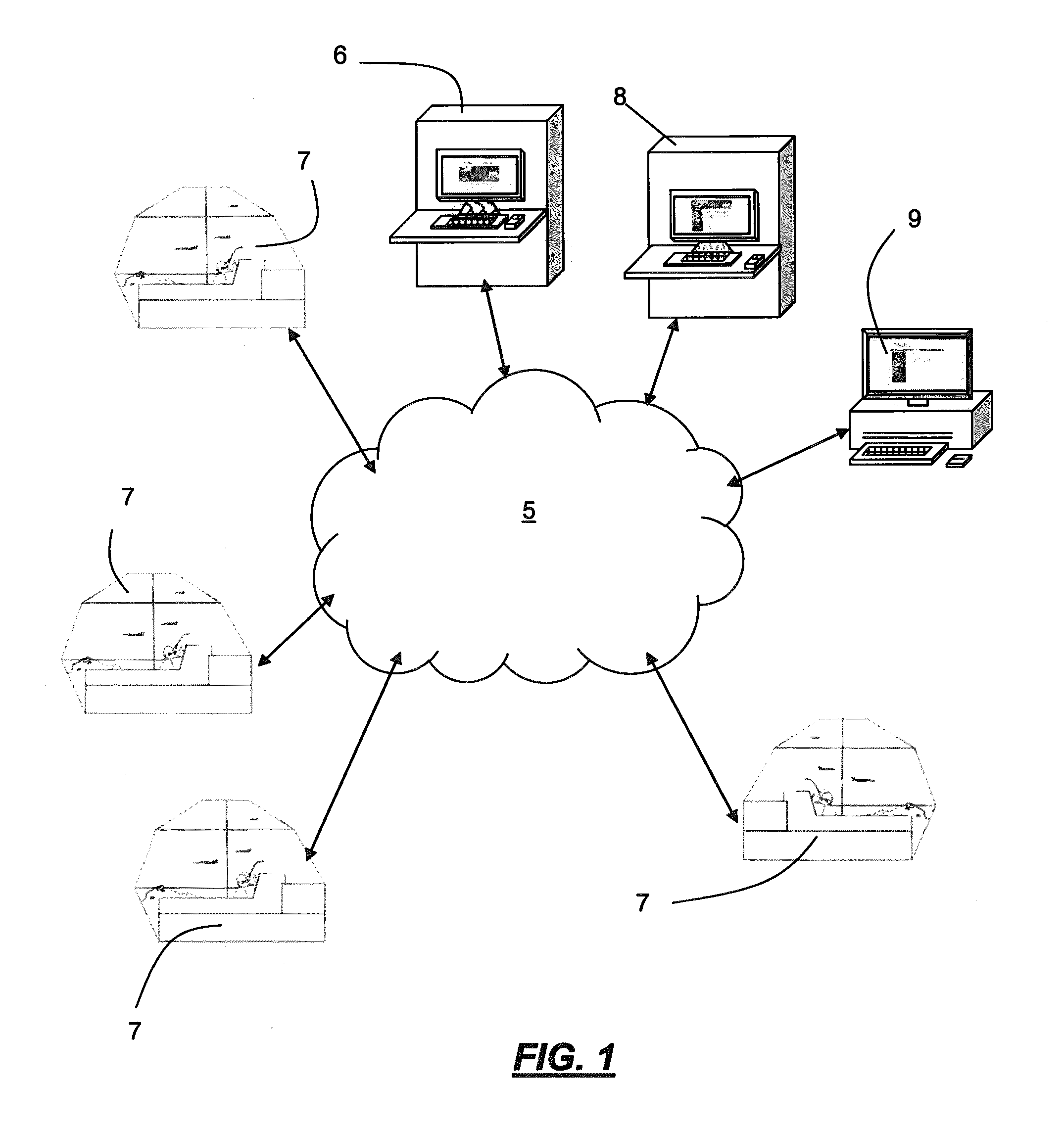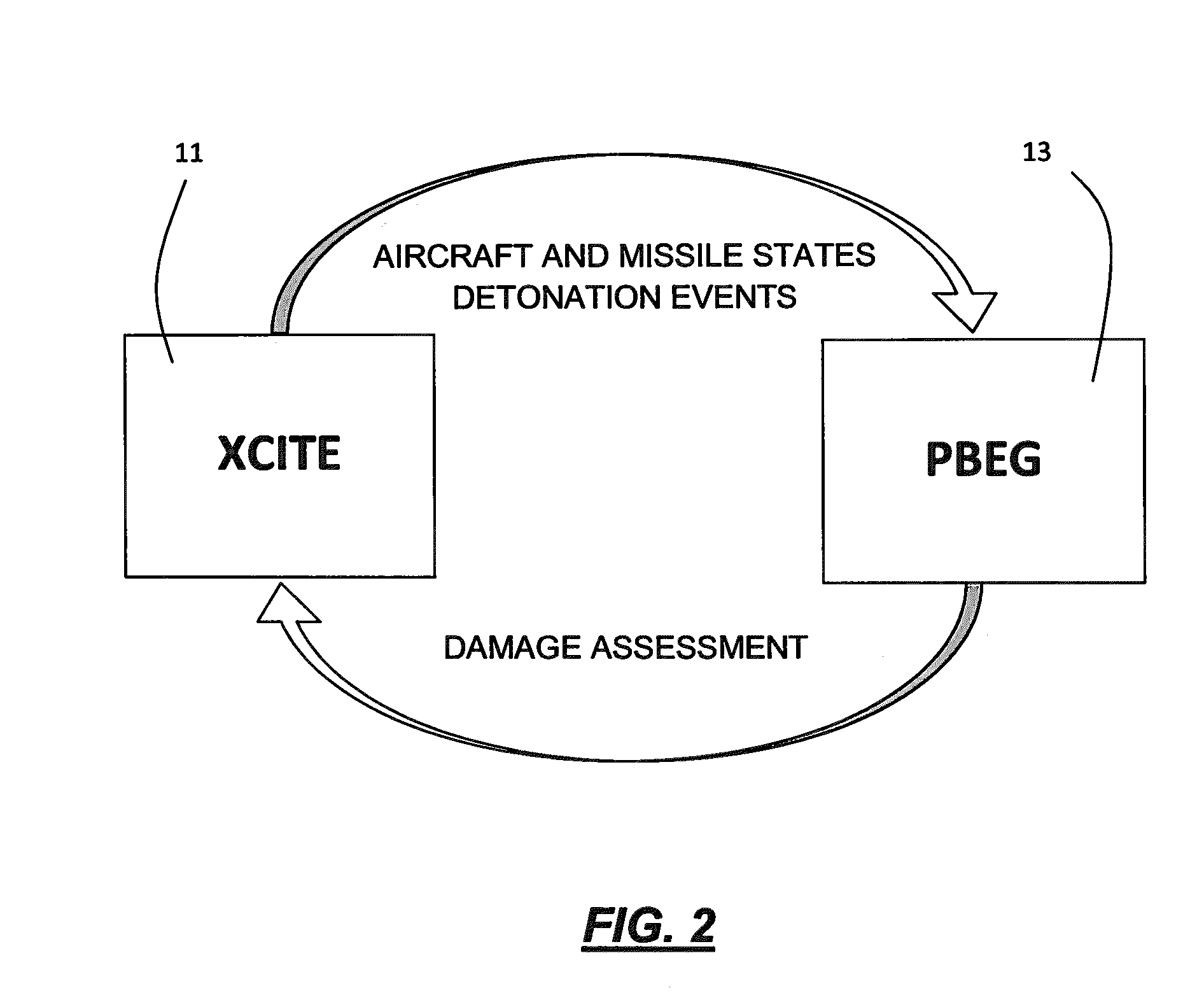Physics-based simulation of warhead and directed energy weapons
a technology of directed energy weapons and simulation systems, applied in the field of simulation systems of vehicles, can solve the problems of difficult modeling of high-complex entity interactions with high precision, difficult to model high-speed missiles and their interaction with aircraft targets, etc., and achieve the effect of assessing limited damage short of destruction
- Summary
- Abstract
- Description
- Claims
- Application Information
AI Technical Summary
Benefits of technology
Problems solved by technology
Method used
Image
Examples
example
[0225]As seen in FIGS. 22 and 23, the damage of the target plane is superimposed in the visualization in such a way that it becomes immediately apparent what part is being hit and what was previously damaged.
[0226]In the scenario shown in FIG. 24, the MiG-29 took a slight left action preventing the ABL's laser from staying completely on target. Referring to FIG. 23, at the outset of the encounter, the ABL managed to score approximately 5 seconds worth of dwell time on the right engine and heat one piece over 80 degrees. The particular piece that was heated 85 degrees took a total of 3.40 seconds of laser time and is located at in entity coordinates. After striking the right engine for 5 seconds, the laser was forced onto the left engine where it quickly found a spot it could stick on for 17.39 seconds and deliver the threshold amount of heat, 733° K, to destroy that part.
[0227]It is noteworthy that FIG. 22 and FIG. 23 are from different test runs of the system. FIG. 24 is an illus...
PUM
 Login to View More
Login to View More Abstract
Description
Claims
Application Information
 Login to View More
Login to View More - R&D
- Intellectual Property
- Life Sciences
- Materials
- Tech Scout
- Unparalleled Data Quality
- Higher Quality Content
- 60% Fewer Hallucinations
Browse by: Latest US Patents, China's latest patents, Technical Efficacy Thesaurus, Application Domain, Technology Topic, Popular Technical Reports.
© 2025 PatSnap. All rights reserved.Legal|Privacy policy|Modern Slavery Act Transparency Statement|Sitemap|About US| Contact US: help@patsnap.com



